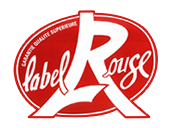The craft | Marennes Oléron
- 1. Capture
- Oysters reproduce in summer. Each animal lays at least a million eggs which become larvae after fertilisation. If temperature, salinity and other conditions are right they settle after fifteen days and become a young oyster, called a «spat».
- Oyster farmers place «collectors» (tubes and cups) in the ocean to gather them, where the young settled oyster begins feeding and growing. The basins of Marennes Oléron and Arcachon are the only two places in France where oysters reproduce naturally.
- 2. "Détroquage"
- At one year old the spat is detached from its collector, a process called “détroquage”, often carried out by women because it requires skill and a delicate touch.
- 3. Growling
-
After “détroquage” the oyster is placed in ocean where it remains for two years.
During its growth the oysters are carefully watched over – the farmer fears storms and predators the most. The role of the tides is essential in the growing stage.
- 4. Finishing or growing
in "claires" - «Claires» are shallow ponds dug into the sediment about one metre deep once used for salt farming. The water is renewed by the tides.
- The oysters are either cultured in this manner (called «pousse en claire») or finished like this (called «fines de claire» or «speciales de claire») depending on the time they spend in the claire and the number of animals per square metre.
Marennes Oléron
Oysters have a territory






